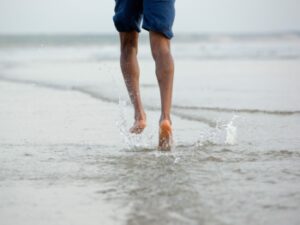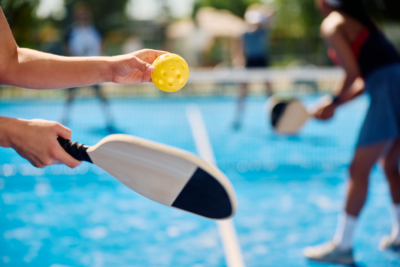Until recently, most of us considered athletic shoes an important and essential part of our athletic training gear. This belief was fortified by the advent of the modern running shoe in the mid-1970s. Every year since then, the big running shoe companies have introduced new product lines based on shoes with increased cushion and support. Today, however, there has been an uprising among subgroups of runners, cross-fitness enthusiasts and weightlifters: Less shoe is better, and no shoe is best. The topic of barefoot running is gaining traction.
Why Go Barefoot?

The premise behind barefoot running is essentially that the intrinsic muscles, joints, ligaments and mechanoreceptors of the feet require stimulation to function properly. This optimal function is inhibited by highly supportive and cushioned shoes. Intrinsic foot muscle atrophy and mechanoreceptor activity combine to cause injury and reduced performance. Also, the thickly padded heels of running shoes have produced a world of runners who now strike heavily on their heels, producing a gait that is reportedly quite different from those who run without shoes. Whether or not barefoot running is better for humans has yet to be determined scientifically, but advocates have made some very compelling arguments in favor of it.
Injury Risks
Bunions, neuromas, plantar fasciitis and stress fractures can all be the result of inappropriate shoes. Yet, barefoot running can also produce its share of injuries—from frostbite to tendinitis, metatarsal stress fractures, lacerations, puncture wounds, abrasions and stone bruising.
Advice for Running Barefoot
While running barefoot is most certainly what our ancestors did and our aboriginal cousins still do, we currently lack the knowledge to say irrefutably that it is more healthful than running with shoes. If you’re interested in trying out barefoot running, consider this advice before you begin:
- Start with walking barefoot or in minimalist shoes, and gradually work into running.
- Progress to short runs. Begin running only five minutes per run, and gradually increase.
- Rather than going totally barefoot, use a minimalist shoe to protect your feet from thorns, glass, nails, stones and other debris.
- Stop barefoot running at the earliest sign of pain.
- Avoid running barefoot in freezing temperatures. Shoes protect us from frostbite.
- Be prepared for blisters and calluses to form as you transition to barefoot running.
Red Flags
If you switch from shoes to bare feet, you must allow time for your bones and soft tissue to adapt to the new stresses that barefoot running will place on the lower extremities. Achilles’ tendons are particularly susceptible to injury if there is a sudden change in their position of function. Most conventional running shoes place the Achilles’ tendon in the shortened position. By suddenly switching to barefoot running, you will place an unaccustomed strain on the Achilles’ tendon, making it more susceptible to rupture and strain. Use discretion and prudence in transitioning from supportive shoes to barefoot or minimalist shoe wear.
For the most part, our bare feet would work great if we stayed on soft, loamy soil or a sandy beach. People with the gift of optimal biomechanics will thrive with barefoot running regardless of where they run. But other people’s foot biomechanics will require shoes to prevent injury, and still others will require additional supportive or corrective shoes to function near normally. As further research uncovers the effects of shoes on our feet, alterations and modifications in shoe design will continue.
For more information on prevention and wellness, or to find a doctor of chiropractic near you, visit www.HandsDownBetter.org.
Content credit: William Morgan, DC
Reviewed by the ACA Editorial Advisory Board. The information in this post is for educational purposes. It is not a replacement for treatment or consultation with a healthcare professional. If you have specific questions, contact your doctor of chiropractic. To find an ACA chiropractor near you, click here.



